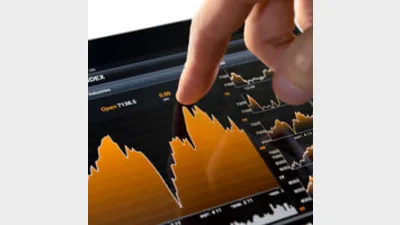Volatile markets give financial planners a wild ride



Australian financial planners and their clients have had to live with higher than normal levels of market volatility for much of the past three years as both a consequence and a by-product of the GFC. However, in 2011 the sovereign debt crisis upped the ante.
Australian financial planners and their clients have had to live with higher than normal levels of market volatility for much of the past three years as both a consequence and a by-product of the GFC.
But in 2011 the main contributor to that market volatility has been debt - European sovereign debt and the US debt ceiling.
Indeed, while the year started on a reasonably positive note, it did not take long for the economic and market commentators to start discussing “PIGS” – Portugal, Ireland, Greece and Spain – the Eurozone economies deemed to face the greatest challenges with respect to sovereign debt.
It was Greece which was first to hit the debt wall and the ripples it generated across global markets were commensurate with the degree to which the European Community struggled to come to terms with providing a bail-out. That struggle continues.
Similarly, while the US Congress agreed in August to lift the nation’s debt ceiling after weeks of political brinksmanship, the underlying issue has not gone away and continues to be a factor in market activity, with a view that a similar debate will occur next year.
The impact of both the European and US debt issues on the Australian share market was evidenced by a steep decline which saw it descend through 4,000 points to levels not seen since the depths of the GFC.
According to ASX data, the ASX 200 Index started January 2011 at around 4,753.9 and had descended to 4,008.6 by the end of September, having broken through the 4,000 barrier on a number of occasions.
According to data collected by specialist research house Wealth Insights, there has been a strong correlation between the ASX 200 and client sentiment, which in turn, has been feeding into financial adviser sentiment.
Wealth Insights managing director Vanessa McMahon said this correlation between the share market and sentiment had been evident throughout the period since the start of the GFC.
Continuing volatility has also been factored into the forward outlooks of the major banks and institutions, with Westpac, NAB, ANZ and the Commonwealth Bank each pointing to the manner in which it had impacted investment performance, and was likely to continue to do so into 2012.
As well, one of the most recent meetings of the Reserve Bank board saw them discussing “extreme market volatility which reflected fears about a slowdown in the global economy and escalation of sovereign debt tensions in the United States and Europe”. These concerns had led to particular focus on the financial strength of European banks.
Recommended for you
The RBA has made its latest interest rate decision at the the final monetary policy meeting of 2025.
State Street is actively seeking to launch ETFs in the Australian government, corporate and high yield bond space next year in order to capitalise on the phase-out of AT1 hybrids.
Greater consistency across the ASIC adviser exam has helped boost the number of first-time candidates this year with many opting to sit before undertaking a Professional Year.
Financial advice practice Eureka Whittaker Macnaught is in the process of acquiring three firms to boost its annual revenue to $25 million.











